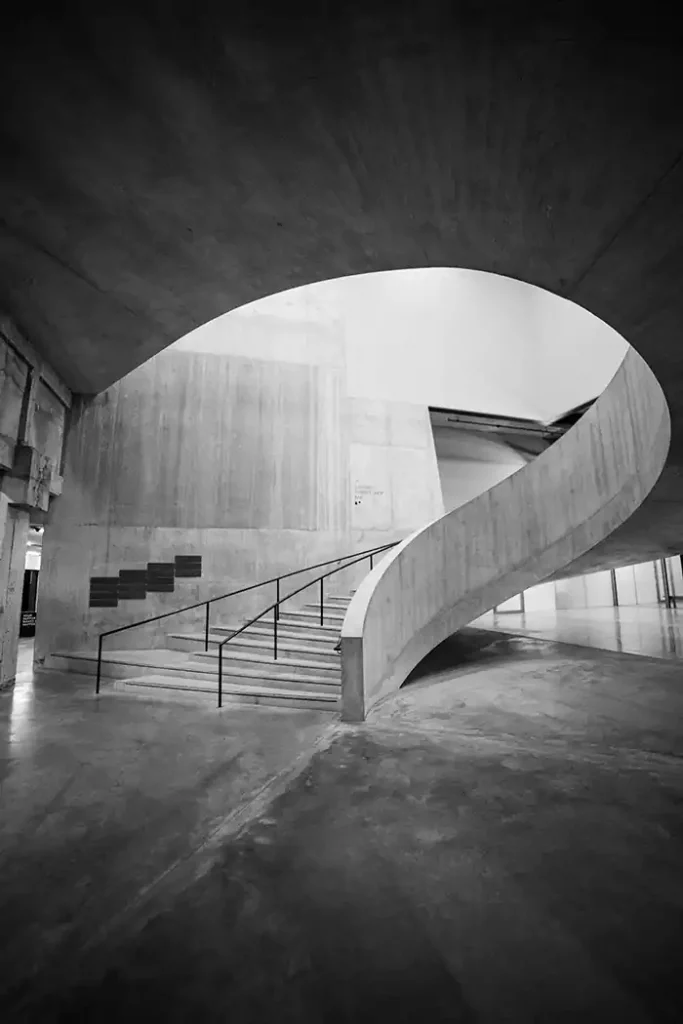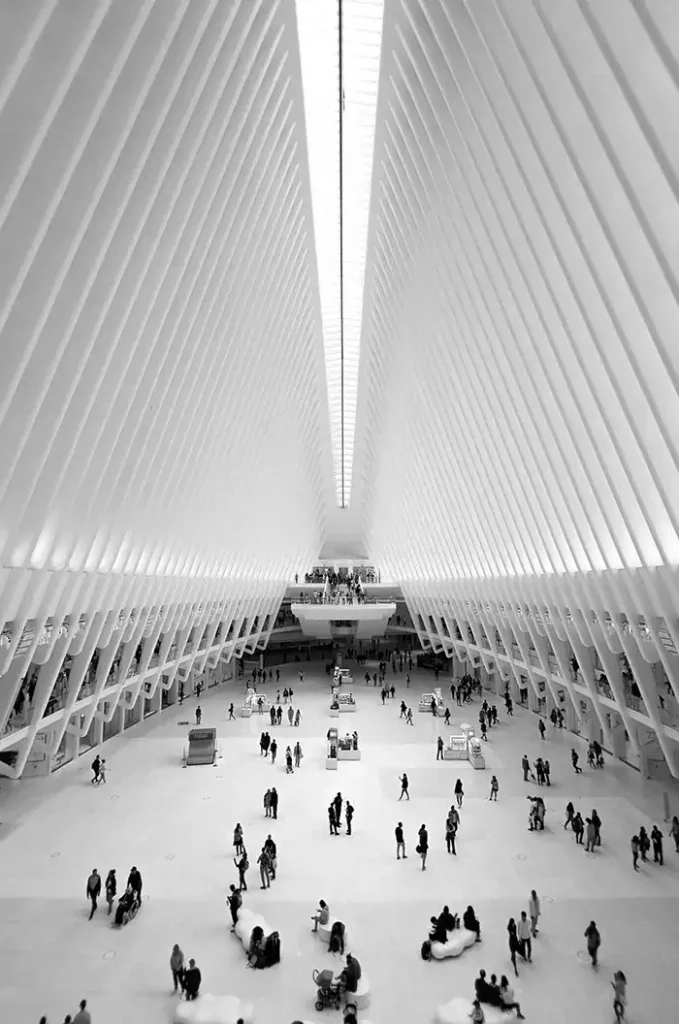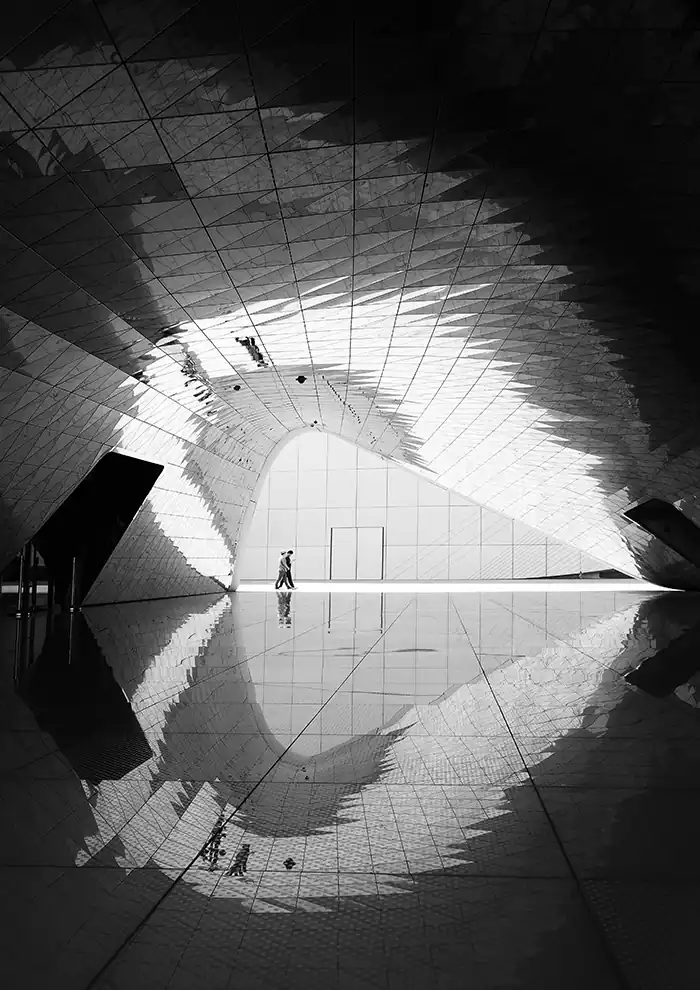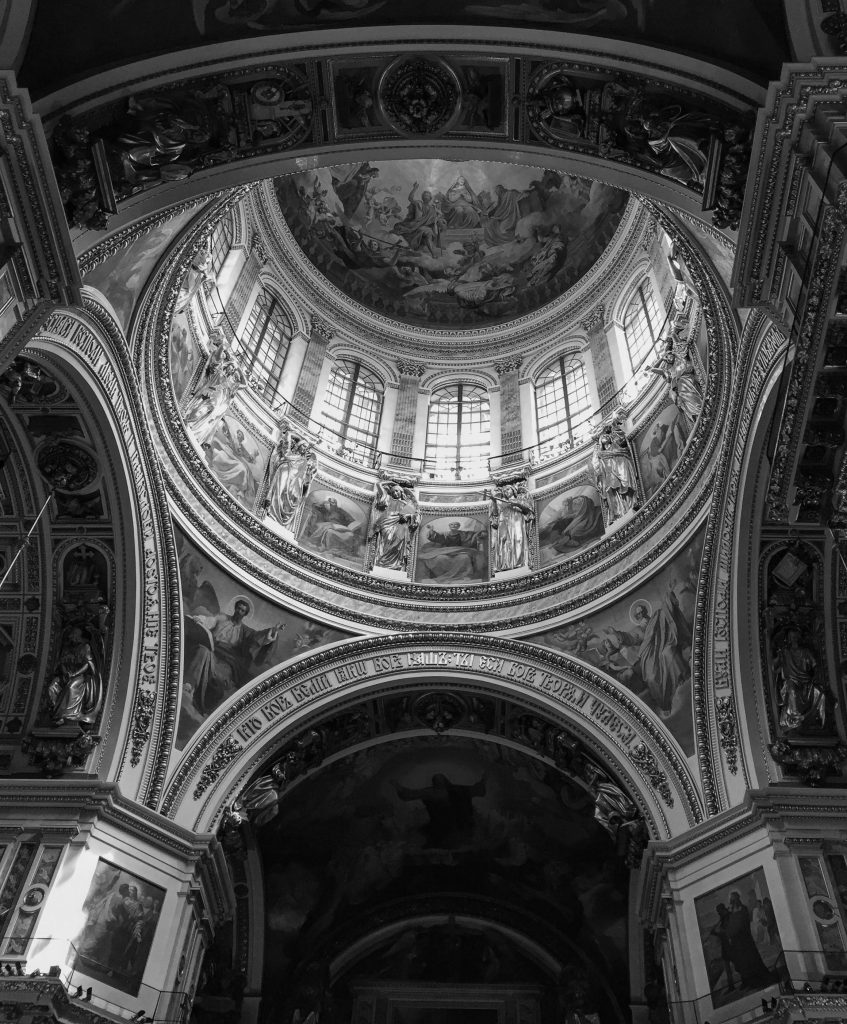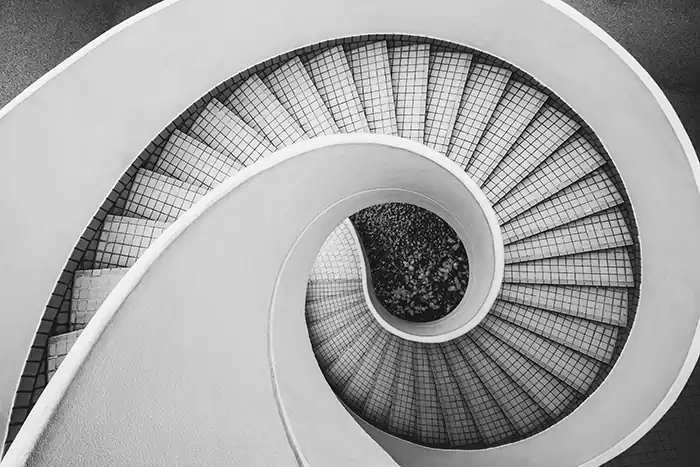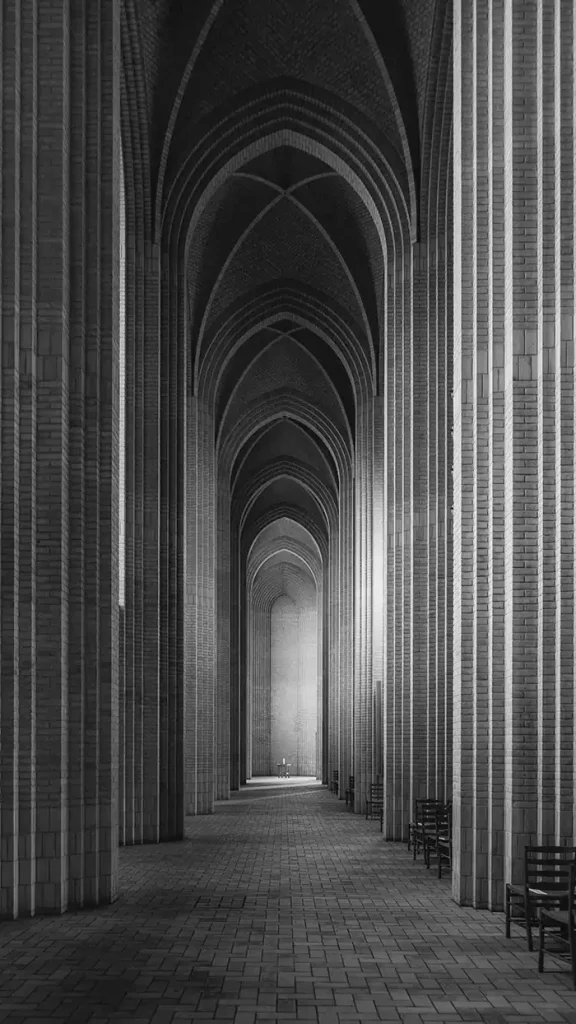Architectural photography depicts the beauty of scenic areas and sometimes even buildings more beautiful than what is seen with the eye. Combining this style with black and white photography will be highly artistic and challenging.
The experience and art of the photographer are very effective in achieving success in black white architectural photography.
Topics
The main points of black white architectural photography
Photography of the exterior of the building
Perspective
In exterior photography of the building, perspective is the most important determining factor. To determine the proper perspective, you should consider the dimensions of the building as well as its three-dimensional shape. The question is, can you be far enough away from the building in the space around the building to capture the perspective you want?
The answer to this question depends on the lens you are using. The result will probably be better if you use a standard lens, but you will need more space. Using a standard lens, you will need to move further away from the building.
By using a wide lens, you eliminate the space problem. But you fall into the trap of distortion problem. Excessive distortion must be resolved in post-processing but may not be resolved entirely. (See more photos about architectural photography, visit the Architectural Photography Examples post. )
Photography of the interior of the building
Inside the building, there is certainly not enough space, and the standard lens is not suitable here, but what you need is only a wide lens.
In interior architecture, it is essential to record all the details in one shot, which is why it is necessary to use a wide lens. Unfortunately, wide lenses are often expensive, but some less expensive types are also available in the market.
Why is black and white photography better for architectural photography?
Most of the components of a building are made of concrete and granite stones and similar. Buildings also usually have a regular geometric shape. Such surfaces typically look more attractive in the use of various gray spectrums. (Visit the Amazing Black And White Photos post to see more black and white images. )
In addition to the reason I mentioned above, many reasons indicate the superiority of black and white photography, and I have discussed them extensively in previous articles. ( To read more about black and white photography, see the Black and White Photography Techniques article. )
Spiral staircases and nested corridors are suitable subjects for photography
A spiral staircase can be photographed directly from top to bottom; They will look like concentric circles. Long nested corridors are also suitable for shooting from opposite angles.
Famous architecture photographers
Eric de Mare ( 1910 – 2002)
Eric de Mare is widely regarded as one of Britain’s most important architectural photographers. The Telegraph claims that through De Mare’s photos, British architects were compelled to reconsider modernism as a whole and what actually defines it, which propelled the entire profession into a new age.
Photographer Eric de Mare specialized primarily in industrial work. He was published in numerous journals and received numerous honors for his distinctive perspective on architecture because he had years of experience in this industry.

Ezra Stoller (1915 – 2004)
Chicago is where Ezra Stoller was born. He specialized in taking pictures of famous examples of contemporary architecture. Alva Aalto’s Finnish Pavilion at the 1939 New York World’s Fair and Frank Lloyd Wright’s Fallingwater are two of his most well-known creations.
He gained worldwide fame for his uncanny knack for using black-and-white photography to portray the beauty of contemporary architecture.
It is widely believed that Ezra Stoller’s work contributed to the development of modernism in architecture. He had the distinction of being the first person to receive the American Institute of Architects’ Gold Medal for Photography because of his illustrious career.
